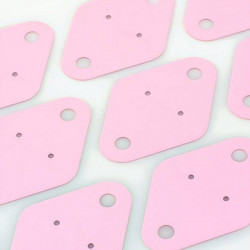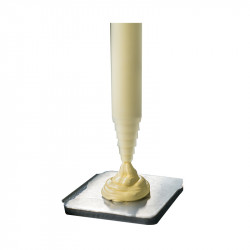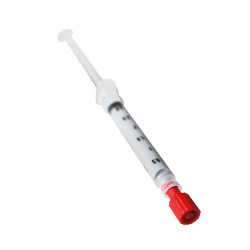Debes estar logueado
-
WróćX
-
Componentes
-
-
Category
-
Semiconductores
- Diodos
- Tiristores
-
Módulos con aislamiento eléctrico
- Módulos con aislamiento eléctrico | VISHAY (IR)
- Módulos con aislamiento eléctrico | INFINEON (EUPEC)
- Módulos con aislamiento eléctrico | Semikron
- Módulos con aislamiento eléctrico | POWEREX
- Módulos con aislamiento eléctrico | IXYS
- Módulos con aislamiento eléctrico | POSEICO
- Módulos con aislamiento eléctrico | ABB
- Módulos con aislamiento eléctrico | TECHSEM
- Przejdź do podkategorii
- Rectificadores de puente
-
Transistores
- Transistores | GeneSiC
- Módulos SiC MOSFET | Mitsubishi
- Módulos SiC MOSFET | STARPOWER
- Módulos ABB SiC MOSFET
- Módulos IGBT | MITSUBISHI
- Módulos de transistores | MITSUBISHI
- Módulos MOSFET | MITSUBISHI
- Módulos de transistores | ABB
- Módulos IGBT | POWEREX
- Módulos IGBT | INFINEON (EUPEC)
- Elementos semiconductores de carburo de silicio (SiC)
- Przejdź do podkategorii
- Controladores de puerta
- Bloques de energía
- Przejdź do podkategorii
- Convertidores de corriente y tensión LEM
-
Componentes pasivos (condensadores, resistencias, fusibles, filtros)
- Resistencias
-
Fusibles
- Fusibles miniatura para circuitos electrónicos, serie ABC y AGC
- Fusibles tubulares de acción rápida
- Eslabones fusibles de retardo de tiempo con características GL / GG y AM
- Eslabones fusibles ultrarrápidos
- Fusibles de acción rápida (estándar británico y estadounidense)
- Fusibles de acción rápida (estándar europeo)
- Fusibles de tracción
- Eslabones fusibles de alto voltaje
- Przejdź do podkategorii
-
Condensadores
- Condensadores de motor
- Condensadores electrolíticos
- Condensadores de película
- Condensadores de potencia
- Condensadores para circuitos de CC
- Condensadores de corrección del factor de potencia
- Condensadores de alto voltaje
- Condensadores de calentamiento por inducción
- Condensadores de almacenamiento de energía y pulsos
- Condensadores de ENLACE CC
- Condensadores para circuitos AC/DC
- Przejdź do podkategorii
- Filtros EMI
- Supercondensadores
- Protección contra sobretensiones
- Filtros para detección de emisiones TEMPEST
- Pararrayos
- Przejdź do podkategorii
-
Relés y contactores
- Teoría de relés y contactores
- Relés semiconductores de CA trifásicos
- Relés semiconductores de CA trifásicos
- Reguladores, controles y accesorios
- Arranques suaves y contactores de inversión
- Relés electromecánicos
- Contactores
- Interruptores giratorios
-
Relés semiconductores de CA monofásicos
- Relés semiconductores CA monofásicos, serie 1 | D2425 | D2450
- Relés semiconductores CA monofásicos, series CWA y CWD
- Relés semiconductores CA monofásicos de las series CMRA y CMRD
- Relés semiconductores de CA monofásicos, serie PS
- Relés semiconductores de CA dobles y cuádruples, serie D24 D, TD24 Q, H12D48 D
- Relés de estado sólido monofásicos, serie gn
- Relés semiconductores de ca monofásicos, serie ckr
- Relés AC monofásicos SERIE ERDA Y ERAA para carril DIN
- Relés AC monofásicos para corriente 150A
- Relés dobles de estado sólido integrados con disipador de calor para carril DIN
- Przejdź do podkategorii
- Relés semiconductores CA monofásicos para PCB
- Relés de interfaz
- Przejdź do podkategorii
- Núcleos y otros componentes inductivos
- Radiadores, varistores, protecciones térmicas
- Aficionados
- Aire Acondicionado, Accesorios para Armarios Eléctricos, Neveras
-
Baterías, cargadores, fuentes de alimentación de búfer e inversores
- Baterías, cargadores - descripción teórica
- Baterías de iones de litio. Baterías personalizadas. Sistema de gestión de batería (BMS)
- Pilas
- Cargadores de baterías y accesorios
- Fuente de alimentación de respaldo de UPS y fuentes de alimentación de búfer
- Convertidores y accesorios para fotovoltaica
- Almacen de energia
- Celdas de combustible
- Baterías de iones de litio
- Przejdź do podkategorii
-
Automaticas
- Elevadores Spiralift
- Piezas para drones Futaba
- Finales de carrera, microinterruptores
- Sensores, transductores
- Pirometría
- Contadores, temporizadores, medidores de panel
- Dispositivos de protección industrial
- Señalización luminosa y sonora
- Cámara termográfica
- Pantallas LED
- Botones e interruptores
- Przejdź do podkategorii
-
Cables, alambres Litz, conductos, conexiones flexibles
- alambres
- Pasamuros y acopladores de cables
- cables Litz
-
Cables para aplicaciones especiales
- Los cables de extensión y compensación
- Cables para termopares
- Los cables de conexión a PT czyjnków
- Multicore cables temp. -60 ° C a + 1400 ° C
- cables de media tensión SILICOUL
- ignición alambres
- Los cables calefactores
- temp núcleo único. -60 ° C a + 450 ° C
- conductores de trenes
- El calentamiento de los cables en el Ex
- Przejdź do podkategorii
- camisas
-
trenzas
- trenzas planas
- trenzas ronda
- trenza muy flexible - plana
- trenza muy flexible - Ronda
- Copper cilíndrico trenzado
- Copper protector de la trenza y cilíndrica
- cintas de conexión flexibles
- Trenzas cilíndrico galvanizado y acero inoxidable
- Aislamiento de PVC trenzas de cobre - Temperatura 85 ° C
- aluminio trenzado plano
- Kit de conexión - trenzas y tubos
- Przejdź do podkategorii
- Accesorios para la tracción
- Terminales de cable
- barras flexibles aisladas
- carril flexible multicapa
- sistemas de gestión de cables
- Przejdź do podkategorii
- Zobacz wszystkie kategorie
-
Semiconductores
-
-
- Suppliers
-
Applications
- Accionamientos de CA y CC (inversores)
- Automatización HVAC
- Automatización industrial
- Automatización industrial
- Calentamiento por inducción
- Componentes para atmósferas potencialmente explosivas (EX)
- Dispositivos de protección industrial
- Energy bank
- Equipos para Armarios de Distribución, Control y Telecomunicaciones
- Fuentes de alimentación (UPS) y sistemas rectificadores
- Impresión
- Máquinas de soldar y máquinas de soldar
- Máquinas herramientas CNC
- Máquinas para secar y procesar madera
- Máquinas para termoformado de plásticos
- Medición y regulación de temperatura
- Medición y regulación de temperatura
- Minería, metalurgia y fundación
- Motores y transformadores
- Tracción de tranvía y ferrocarril
-
Instalación
-
-
Inductores
-
-
Dispositivos de inducción
-
-
Servicio
-
- Contact
- Zobacz wszystkie kategorie
Thermally conductive materials in power storages

In electric engineering the technological development caused a need to search for new solutions in heat conduction.
The appearance of the thermal-conductive materials on the market made it possible to modernize (mostly miniaturize) application. It became possible due to the thermally conductive abilities of these elements and their electrical insulation. With time, it started to be considered to use them in power banks, which under high temperatures work significantly worse and have more errors.
While designing cooling systems many factors have to be taken into consideration:
- electric resistance (insulation and resistance)
- resistance to external factors (temperature, shocks, dust)
- average and max power of the device
- max working temperature
- cooling system efficiency
- smoothness/porosity of the cooling surface
The most important characterizing parameters of thermally conductive materials are:
Heat conductivity - it is an amount of heat that will flow through a given material in particular conditions and time. Each material has a different value of thermal conductivity, thus not all of them are suitable for heat conduction applications. In thermally conductive materials, mixes of metal oxide particles (filler) are most often used, in various sizes and shapes, to achieve the right value of conductivity.
Thermal resistance - it is a value of resistance which the material offers to the heat flow. In cooling systems, thermal resistance has a huge significance - we want to choose the material with the lowest thermal resistance to achieve the best results in heat conduction. One of the main goals of such applications is to remove air gaps between surfaces of the connectors, because the air has a big thermal resistance.
Types of materials used in battery storage:
Thermally conductive glues - special glues prepared for work in difficult conditions. They are resistant to high temperatures and do not dry, thus can keep their properties for a long time. The usage of the glue increases heat conduction, while connecting the joints, which allows eliminating from the application the need to use screws or clamps. Mostly used for stabilizing and locating the accumulator’s cells, thus decreasing the number of errors while providing an optimal heat conductivity.
Gap fillers (GFL) - are thermal mixes which can be used for encapsulation of the devices and covering the radiators and enclosure’s covers. Their important advantage is the simplicity of application, which allows for protection of complicated geometries. These materials are usually used to create a so-called “conduction track.” This solution increases thermal properties, amortization and application’s stability. Additionally, fillers increase the electrical insulation, which makes the usage of the electric device much safer.
Filling materials - structurally very similar to gap fillers, however, have different mechanical and electrical properties. Filling materials are foils with precise geometry, provided in the shape of sheets or cut out in a special shape of the elements. They are adjusted to compensate for the irregularities of the components, thus most effectively eliminating air bubbles and gaps, and can be used in applications sensitive to pressure.
What are the benefits of using thermally conductive materials?
While analyzing the influence of temperature on the accumulators, it is crucial to notice that variable temperature is a factor that significantly affects the productivity of the battery. The increase of temperature above the recommended one by the suppliers can cause drops in capacity, which can reach up to 50% of the accumulator’s capacity. Work in the wrong temperature can lead to battery aging and increasing its failure frequency. Thus, using materials for effective heat conduction to maintain optimal temperature allows a power storage to work longer and be more efficient.
Thermally conductive materials also allow stabilizing accumulator’s cells towards the vehicle, protecting it from mechanical damages. It is crucial because possible shocks to the power storage can cause active mass of the plates to fall out from cells. This on the other hand leads to the decrease of capacity of the accumulator or, in extreme cases, to internal short circuits. This type of failure damages the accumulator and requires its replacement.
In power storage, errors connected to tidal currents occur. They pose danger to people located in the area. Tidal currents can occur due to: dirty battery block, leakage of the electrolyte through the battery’s enclosure or by occurring cracks and gaps in the battery’s enclosure. Usage of the filler increases electrical insulation, which makes the operation of the system safer and more durable.
Conclusions
Thermally conductive materials can be used in applications producing significant amounts of heat, or in discussed power storage. By using thermally conductive materials we can increase the safety of accumulators and batteries’ exploitation. They provide stabilization of working temperature of such storage, making it possible to be used longer, achieving the highest productivity. In applications at risk of vibrations it is worth considering using fillers to minimize the mechanical damages of accumulators due to the shakes.
After analyzing the benefits of thermally conductive materials in power storage applications it can be stated that they are a cost-efficient investment, which allows to limit the costs connected to the exploitation and service of such devices, providing protection and helping to maintain proper work conditions.
Productos relacionados
Publicaciones relacionadas
 Now available – DC/DC converters from PREMIUM
Now available – DC/DC converters from PREMIUM
 New release in DACPOL lighting for lathes – Kira covers
New release in DACPOL lighting for lathes – Kira covers







Deja un comentario